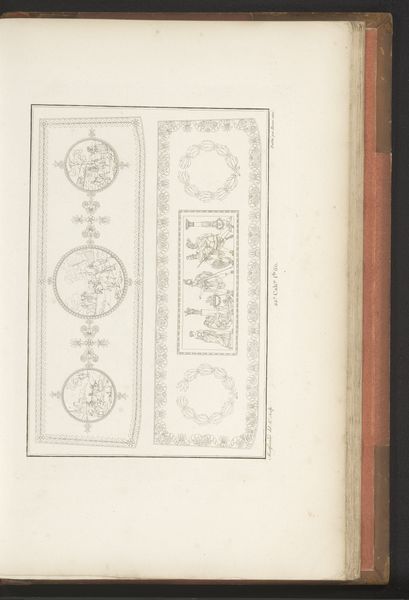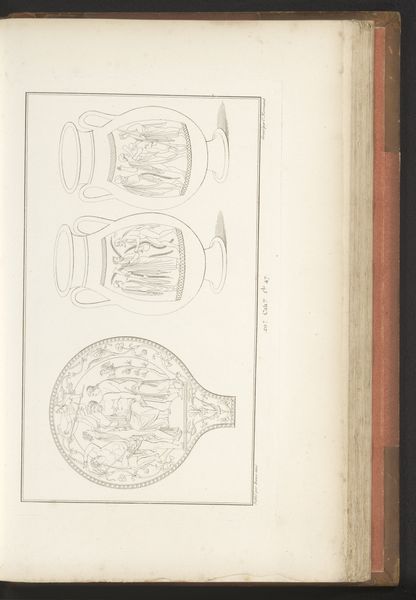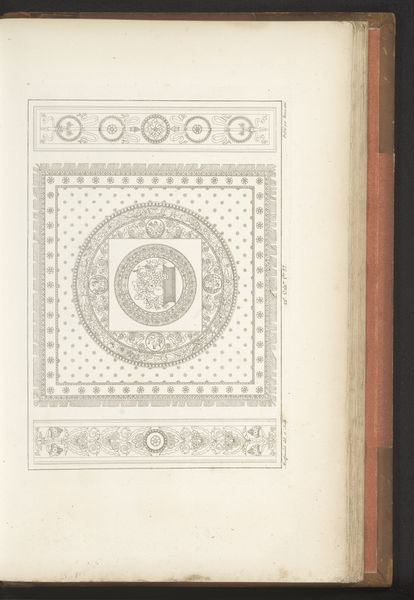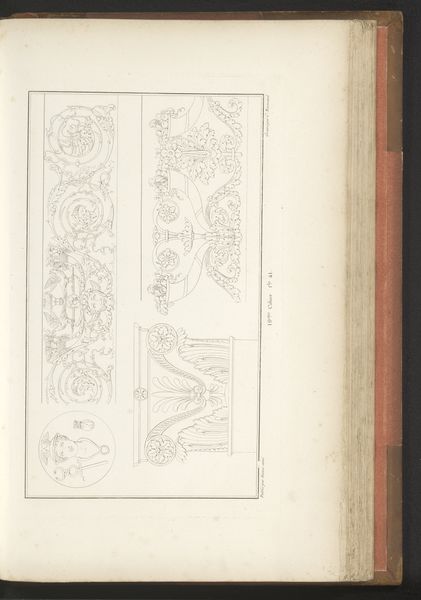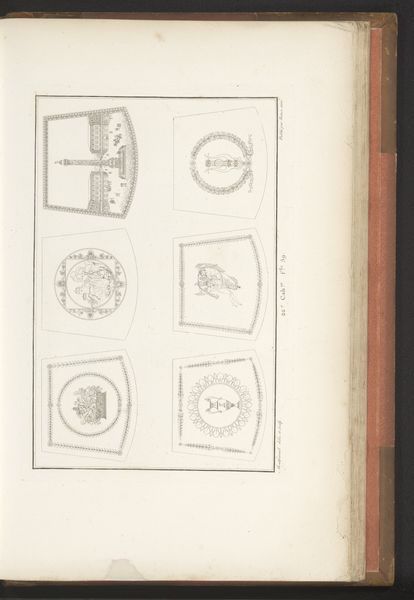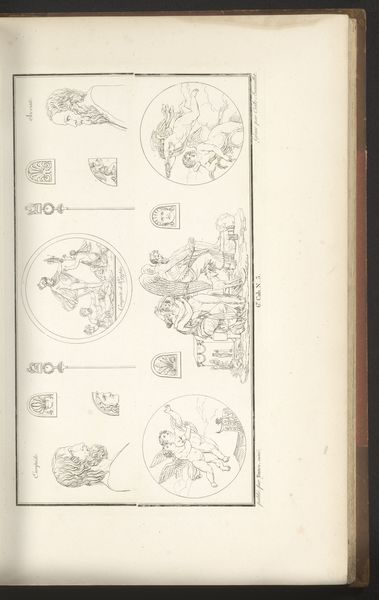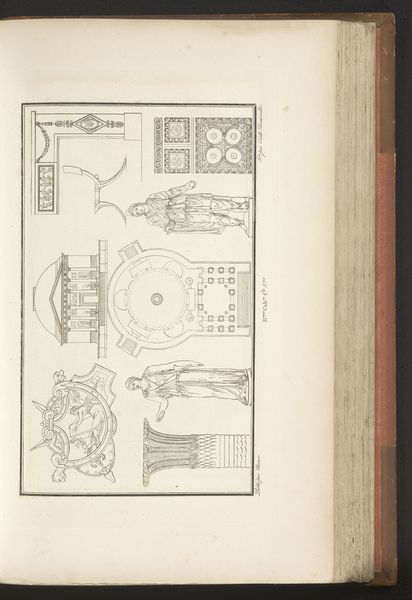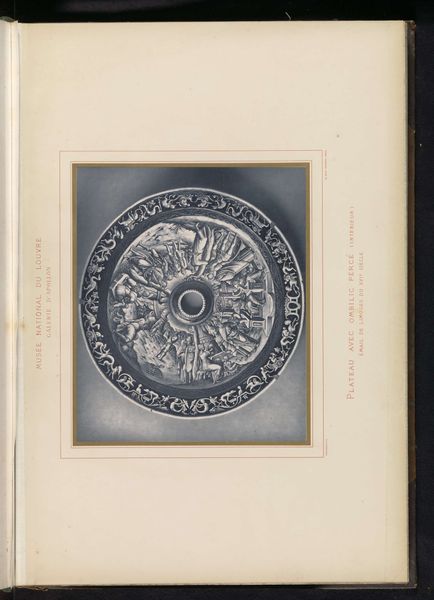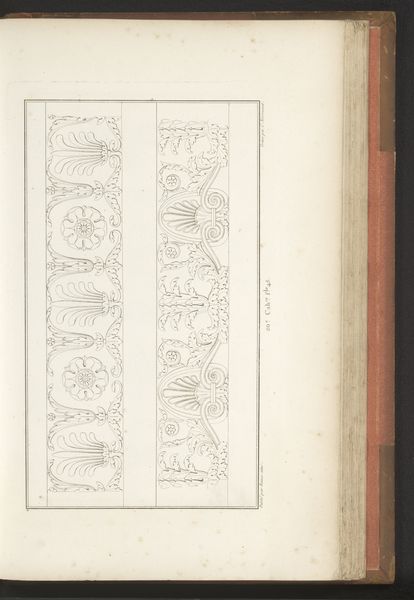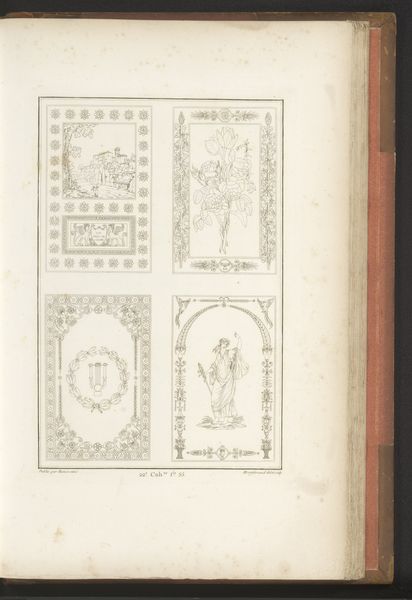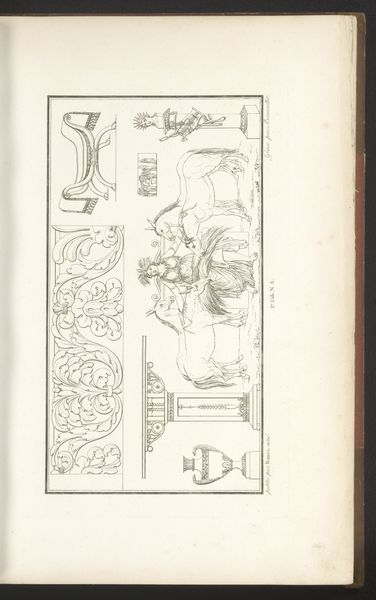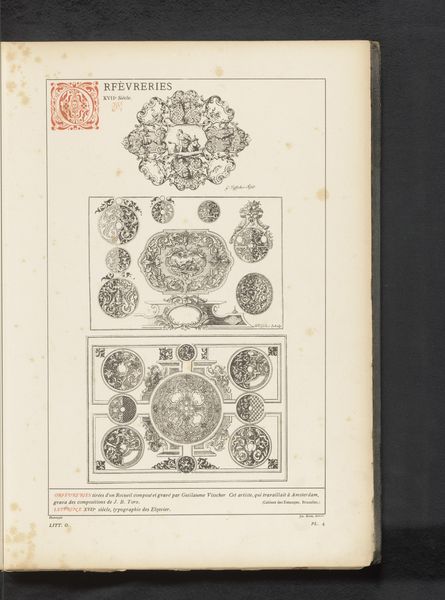
drawing, print, paper, ink, engraving
#
drawing
#
neoclacissism
#
ink paper printed
# print
#
paper
#
ink
#
geometric
#
academic-art
#
engraving
#
miniature
Dimensions: height mm, width mm
Copyright: Rijks Museum: Open Domain
Charles Pierre Joseph Normand made this engraving of hand mirrors in France, likely in the late 18th or early 19th century. The image presents a series of hand mirrors, meticulously rendered. The mirrors are decorated with scenes from classical antiquity and reflect the Neoclassical fascination with ancient Greece and Rome that dominated European art at this time. We can ask: what was the public role of these classicizing images? Were they seen as a way of instilling civic virtue by recalling an idealised past? Or were they simply aspirational objects, designed to appeal to a wealthy elite? These designs likely circulated among craftsmen and workshops, offering models for emulation. They were part of a broader visual culture, influencing the production of luxury goods. To fully understand this engraving, it's crucial to explore pattern books, design manuals, and the decorative arts of the period. By looking into these resources, we can understand the social and institutional contexts of their production and consumption.
Comments
No comments
Be the first to comment and join the conversation on the ultimate creative platform.
